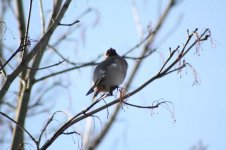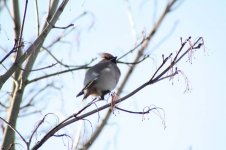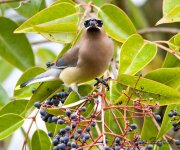I've mentioned in a couple of threads that it's my intention this year to go back to basics & learn how to use my camera & lens properly & try & get the best out of some limited kit.
So, here're my first 2 efforts so far. A couple of Waxwing shots taken yesterday lunchtime. The shots are untouched aprt from resizing for the forum.
I realise they're probably not at the best angle, that's one criticism I have of them. Any other comments most welcome.
Richard
So, here're my first 2 efforts so far. A couple of Waxwing shots taken yesterday lunchtime. The shots are untouched aprt from resizing for the forum.
I realise they're probably not at the best angle, that's one criticism I have of them. Any other comments most welcome.
Richard






